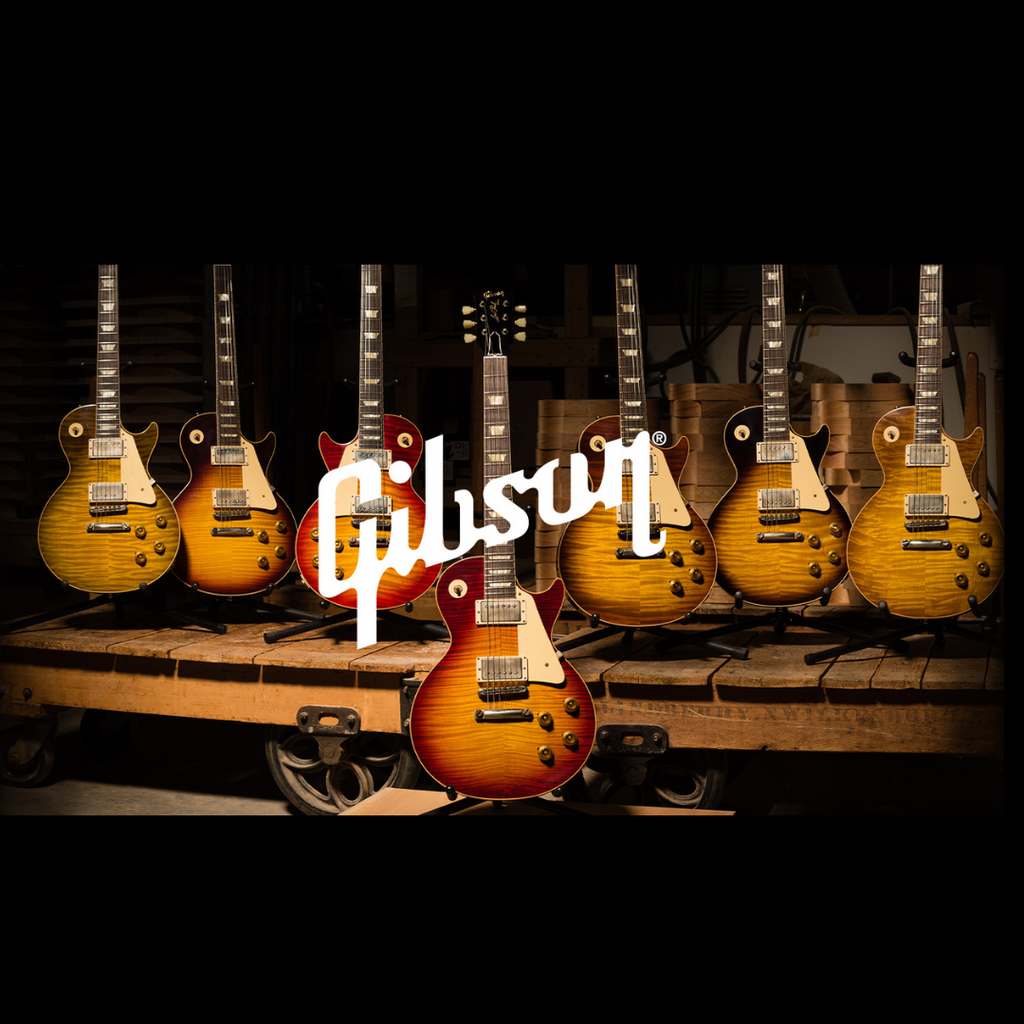It’s a common question we hear at Haworth Guitars both in-store and online:
“Why are Gibson Guitars so bloody expensive?”
And look, we get it. The price tag of a Gibson Les Paul Standard is currently sitting at $6399 at the date of writing this article. And when compared to an American-made Professional II Fender Stratocaster, there’s nearly $3000 in price difference.
So why do Gibson Guitars come with a price tag which can seem higher than other brands on the market?
Well here are some of the main reasons from our perspective here, at Haworth Guitars:
1. Nitro-Cellulose Finishing
Gibson Guitars use a more traditional-type of finishing which is called Nitro-Cellulose. This is more common on vintage instruments and not as common on new guitars. The more common type of finishing is Polyurethane Lacquer.
The advantage of Nitro-Cellulose compared to Poly-Urethane is that the finish allows the guitar to ‘breathe’ more and results in a more natural tone when played. Another advantage is that the finish tends to ‘shrink’ into the guitar and ‘ages’ better than the Poly-Urethane finish.
The disadvantage of Nitro finished guitars is that it takes A LOT longer to finish the guitars when compared to Poly finished guitars. This means that it incurs a greater cost.
2. Carved Top
When you look at the body of a Gibson Les Paul you’ll notice that the top of the body where the bridge and pickups sit is carved. A carved top is an iconic feature of a Gibson Les Paul Guitar.
Usually this is a maple cap which sits on top of a mahogany body.
Carving the top of the maple cap, although done using a CNC machine in most cases, takes additional time and uses additional resources which adds to the overall cost of the instrument.
3. Sloped Headstock
Have you ever noticed that Gibson Guitars don’t use string-trees like other guitars? String-trees being the small steel ‘tree-like’ fittings on the headstock near where the strings meet the machine heads.
That’s because most Gibson Guitars have a sloped headstock to allow for the string-angle needed as the strings pass over the nut of the guitar. If the headstock does not have a slope, string-trees are usually required to give the strings the angle needed.
This break-angle is needed to make sure the strings sit in the nut-slots correctly and give the correct tone without ‘buzzing’.
This feature of Gibson Guitars usually means that extra timber is needed as well as extra time to make the cuts and allow for gluing of the headstock to achieve the slope. Hence adding to the overall quality and the cost of the instrument when compared to other guitars without this feature.
4. High-Grade Timber
Gibson Guitars typically use timbers of a high-grade for their tonal and structural advantages. Timbers such as mahogany for the neck and body of the instrument in many models. Figured maple caps on many of the Les Paul models. Ebony fingerboards, the list goes on.
These particular timbers mean higher quality and also come at a higher price point when compared to other guitars using lower quality timbers.
5. Binding
Many Gibson models feature binding which runs along the edges of the fretboard. Some other Gibson models also have binding running along the edges of the body as well. This is traditionally seen as a premium feature on guitars but also adds to the protection of the timber. Not all guitars feature binding such as this as so it’s a feature which also incurs added costs.
6. Set-In Neck Joint
If you look at the neck-joint where the neck meets the body on a Gibson Guitar, you’ll typically find a set-in neck joint. Meaning that it is held in place using a joint, rather than bolts and a neck plate.
The added advantages can mean that the joint is stronger with a set-in neck joint but also, set-in neck joints can add more sustain to the guitar. This is due to the fact that the instrument works more as one whole piece rather than a part of the tone being affected by the hardware holding the neck to the body
7. Where the Guitars are made
The majority of Gibson Guitars are made in the USA which means that higher labour costs are often incurred. This can be compared to Epiphone for example which are made off-shore and come in at a lower price-point to Gibson.
8. Weight-Reduction, Components and Hardware
Other features of Gibson Guitars that add to the quality and the cost of production include the weight-reduction in some of the Les Paul models. This involves drilling holes in the mahogany body (covered by the maple cap) to reduce the weight of the guitar.
The components such as the volume and tone pots (usually 2 volume and 2 tone controls) are of the Gibson brand in most cases. The same can be said of the pickups. This of course adds to both the quality and the cost of the instrument.
The hardware used on Gibson Guitars such as the machine heads and the bridge are also high-quality and will add to the overall cost of the guitar as well.
So in summary, when you buy a Gibson Guitar you’re buying a high-quality instrument which requires more resources, time and investment to build than many other makes of guitar on the market.
This of course also brings with it added costs which can mean that in some cases the price tag of a Gibson Guitar will be higher than other guitars on the market.
Our advice at Haworth Guitars is to do your own research when it comes to buying your own guitar and make your own decision based on the quality, tone, playability and overall feel of the instrument as well of course the price-point that works best for you!

